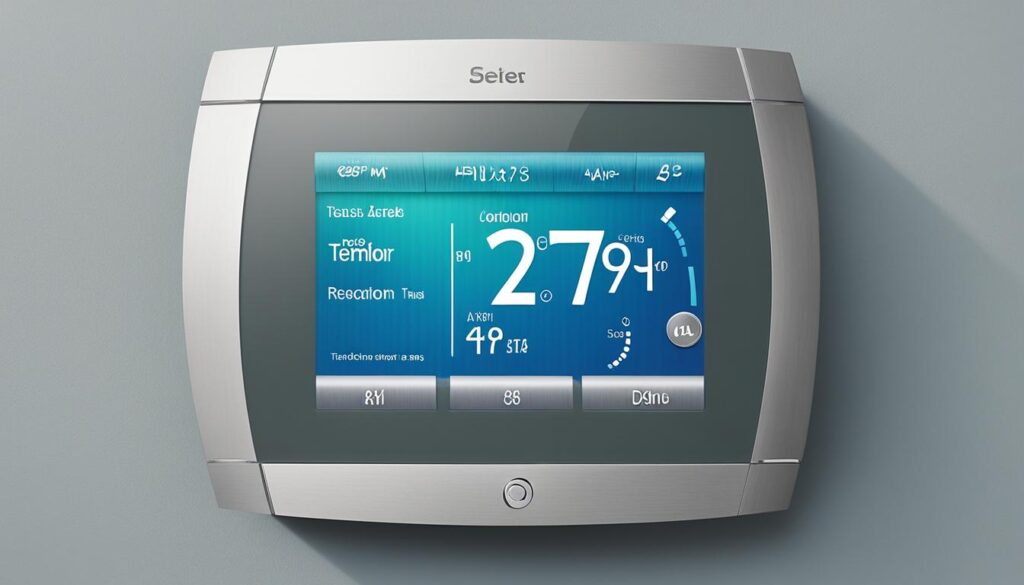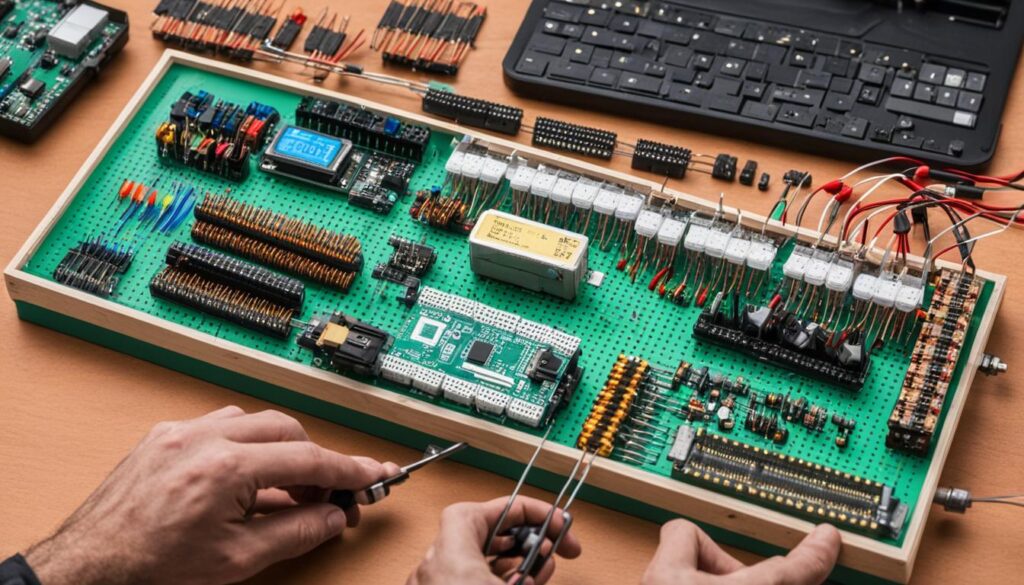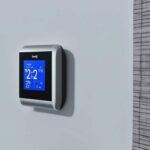If you’re new to the world of DIY home automation and looking to add some smart technology to your living space, you’ve come to the right place. In this article, I’ll introduce you to some simple and affordable projects that are perfect for beginners like you. Don’t worry if you have no prior technical experience – these projects are easy to tackle and will give you a great starting point for your home automation journey.
Table of Contents
Key Takeaways:
- DIY home automation projects are a great way for beginners to enter the world of smart technology.
- Start with simple projects such as smart lighting, home security upgrades, and thermostat installation.
- Research thoroughly and follow installation instructions carefully to ensure success.
- Have fun exploring the endless possibilities of DIY home automation!
- With a little effort, you can transform your living space into a smart, efficient, and convenient home.
Understanding the Basics of Home Automation
Before diving into DIY home automation projects, it’s important to have a solid understanding of the basics. Home automation involves the integration of smart devices and systems to control various aspects of your home, such as lighting, temperature, security, and entertainment. By automating these aspects, you can enhance convenience, energy efficiency, and overall comfort in your living space.
In a home automation setup, smart devices like light bulbs, thermostats, cameras, and speakers are connected through a central hub or a smartphone app. This connectivity allows you to remotely control and monitor these devices from anywhere, providing you with unparalleled convenience and control over your home environment.
Whether you’re a tech-savvy individual or a complete beginner, understanding the basics of home automation will empower you to embark on your own DIY projects with confidence. By starting with simple automation tasks, you can gradually expand and personalize your system according to your needs and preferences.
Benefits of Home Automation
Home automation offers a wide range of benefits that can greatly improve your daily life:
- Convenience: With a home automation system, you can control your lights, adjust your thermostat, or even lock your doors without getting up from your seat. It simplifies various tasks and minimizes the time and effort required for everyday activities.
- Energy Efficiency: By automating your lighting and temperature controls, you can optimize energy usage and reduce your utility bills. Set schedules, motion sensors, and energy monitoring features allow for smart energy management, ensuring you’re only using what you need.
- Safety and Security: Home automation systems can include features such as smart locks, security cameras, and door/window sensors, providing you with enhanced safety and security. Receive real-time notifications and remotely monitor your home, giving you peace of mind even when you’re away.
- Comfort and Entertainment: With home automation, you can create personalized lighting scenes, set the perfect temperature, and control your entertainment devices with ease. Enjoy a cozy and immersive environment that suits your preferences, enhancing your overall comfort and entertainment experience.
With an understanding of the benefits and possibilities offered by home automation, you’re now ready to explore the exciting world of DIY projects that can transform your living space into a smart home.
Smart Lighting Solutions for Beginners
When it comes to DIY home automation projects, one of the easiest and most popular options for beginners is installing smart lighting solutions. With smart light bulbs and switches, you can transform your living space with just a few simple steps.
Smart lighting allows you to control your lights through your smartphone or voice commands, giving you the ability to create different lighting scenes, adjust brightness, and even change colors to suit your mood or preference. Whether you want a cozy ambiance for movie nights or bright, energizing lighting for productive work sessions, smart lighting solutions have got you covered.
Here are some benefits of smart lighting for beginners:
- Convenient Control: With the convenience of controlling your lights from your smartphone, you can turn your lights on or off, adjust brightness, or change colors without even leaving your seat.
- Energy Efficiency: Smart lighting solutions often come with energy-saving features. You can schedule your lights to turn on and off at certain times, ensuring you never forget to switch them off and save energy.
- Mood Enhancement: Create personalized lighting scenes for different occasions. Whether you want romantic candlelight or a vibrant party atmosphere, smart lighting can help you set the perfect mood.
- Integration with Other Smart Devices: Smart lighting systems can be seamlessly integrated with other smart devices in your home. You can connect them with motion sensors, smart speakers, or even set them to respond to voice commands via virtual assistants like Alexa or Google Assistant.
With the wide range of smart lighting solutions available in the market, you can find options to fit any budget and preferences. It’s a great starting point for beginners, as the installation process is straightforward and requires minimal technical knowledge.
| Smart Lighting Brands | Features | Price Range |
|---|---|---|
| Philips Hue | – Color-changing bulbs – Voice control capability – Integration with other smart devices | $49.99 – $199.99 |
| LIFX | – High-quality color options – Wi-Fi enabled – No hub required | $24.99 – $249.99 |
| Sengled | – Affordable smart lighting options – Easy setup process – Voice control compatibility | $9.99 – $189.99 |
As you can see from the table, there are various smart lighting brands available, each offering unique features and price ranges to cater to different needs. Take some time to research and compare options before making a purchase.
Remember, smart lighting solutions are just the beginning of your DIY home automation journey. Once you’ve mastered smart lighting, you can explore other projects like home security upgrades, thermostat installations, and more. The possibilities are endless!

Home Security Upgrades for Peace of Mind
Home security is a top concern for many homeowners, and DIY home automation can provide valuable solutions. By integrating smart devices into your security system, you can enhance the safety of your home without relying solely on traditional methods. Consider the following upgrades to achieve peace of mind:
1. Smart Security Cameras
Installing smart security cameras is a proactive way to monitor your property and deter potential intruders. These cameras can be connected to your home network and accessed through a smartphone app, allowing you to view live footage and receive alerts when motion is detected. With the ability to remotely check in on your home, you can have peace of mind knowing that you can keep an eye on your property at all times.
2. Door/Window Sensors
Door and window sensors provide an extra layer of security by alerting you when they are opened or tampered with. These sensors can be easily installed on doors and windows throughout your home, and they can be connected to your home automation system or directly to your smartphone. By receiving instant notifications, you can take immediate action if there’s any unauthorized access to your home.
3. Smart Doorbell
A smart doorbell not only allows you to see who’s at your door but also enables you to communicate with visitors remotely, even when you’re not home. With features like two-way audio and video recording, you can have a conversation with delivery persons or monitor suspicious activities. A smart doorbell provides an extra level of convenience and security for your home.
By incorporating these home security upgrades into your DIY home automation system, you can enhance the safety of your home and have peace of mind, even when you’re away. These simple and affordable upgrades offer advanced security features without the need for professional installation, making them accessible to beginners.
“Investing in home security upgrades not only helps protect your property but also adds a layer of peace of mind for you and your family.”
| Security Upgrade | Key Features | Installation | Cost |
|---|---|---|---|
| Smart Security Cameras | Live video streaming, motion detection, smartphone alerts | DIY installation | $$ |
| Door/Window Sensors | Alerts for unauthorized access, smartphone notifications | DIY installation | $ |
| Smart Doorbell | Two-way audio, video recording, remote communication | DIY installation | $$ |
Thermostat and Energy Management
Upgrading to a smart thermostat is another DIY home automation project that beginners can take on. Smart thermostats offer a range of features that can help you effectively manage your home’s energy consumption and create a more comfortable living environment.

With remote temperature control, scheduling, and energy usage monitoring, smart thermostats give you greater control over your home’s climate and help you save on utility bills. By optimizing your heating and cooling settings, you can reduce unnecessary energy usage without sacrificing comfort.
But the benefits don’t stop there! Some smart thermostats even incorporate artificial intelligence (AI) capabilities, learning your preferences and adjusting the temperature automatically for maximum efficiency and comfort. They can adapt to your daily routine, ensuring that you come back to a perfectly heated or cooled home without wasting energy while you’re away.
By embracing a smart thermostat, you’re not only benefiting from convenience and comfort but also making a positive impact on the environment. Use the power of technology to contribute to a greener future and reduce your carbon footprint.
Comparison of Popular Smart Thermostats
| Brand | Model | Key Features | Price |
|---|---|---|---|
| Nest | Learning Thermostat | AI learning, remote control, energy history | $249 |
| Ecobee | SmartThermostat with Voice Control | Voice control, remote sensors, energy reports | $249 |
| Honeywell | Home T9 Smart Thermostat | Geofencing, room sensors, compatibility with smart home systems | $199 |
Comparison of popular smart thermostats.
Conclusion
As a beginner in the world of smart technology, DIY home automation projects provide an exciting opportunity to transform your living space. Starting with simple projects like smart lighting, home security upgrades, and thermostat installation allows you to gradually build a customized home automation system that suits your needs and budget.
Before diving in, it’s essential to conduct thorough research and carefully follow installation instructions. By doing so, you’ll gain confidence and knowledge while ensuring a successful outcome for your projects. The key is to have fun and explore the endless possibilities that DIY home automation offers.
With a little bit of effort, you can create a smart, efficient, and convenient home. As a beginner, don’t be intimidated by the vast array of smart technology options available. Start small, take it step by step, and watch your living space transform into a hub of innovation and convenience.
FAQ
What is home automation?
Home automation involves the integration of smart devices and systems to control various aspects of your home, such as lighting, temperature, security, and entertainment.
What can I control with home automation?
With home automation, you can control your lighting, temperature, security cameras, door/window sensors, smart doorbell, and even your entertainment systems.
How do I control my smart devices?
Smart devices can be controlled through a central hub or a smartphone app, allowing you to adjust settings, create schedules, and receive notifications remotely.
Do I need technical experience to start with DIY home automation?
No, you don’t need prior technical experience to start with DIY home automation. There are plenty of beginner-friendly projects available that anyone can tackle.
What are some simple DIY home automation projects for beginners?
Some simple DIY home automation projects for beginners include installing smart lighting solutions, upgrading to a smart thermostat, and enhancing home security with smart cameras and sensors.
Can I integrate different smart devices together?
Yes, many smart devices can be integrated with each other. For example, you can integrate your smart lighting system with motion sensors or smart speakers for enhanced convenience and energy efficiency.
Can DIY home automation save me money on my utility bills?
Yes, by optimizing your energy usage with a smart thermostat and smart lighting, you can save money on your utility bills by reducing unnecessary energy consumption.
Is it difficult to install DIY home automation systems?
Installing DIY home automation systems can vary in difficulty depending on the specific project. However, many products come with detailed installation instructions, and there are plenty of online resources and communities available for support.
Can DIY home automation improve the security of my home?
Yes, DIY home automation can improve the security of your home. By installing smart security cameras, door/window sensors, and a smart doorbell, you can monitor your property and receive instant notifications in case of any suspicious activity.
Can I expand my DIY home automation system over time?
Yes, one of the great benefits of DIY home automation is that you can start small and gradually expand your system according to your needs and budget. There are many compatible smart devices available on the market that can seamlessly integrate with your existing setup.
Where should I start with DIY home automation?
If you’re new to DIY home automation, a good starting point is with simple projects like smart lighting, home security upgrades, or thermostat installation. These projects are beginner-friendly and can make a noticeable impact on your living space.


